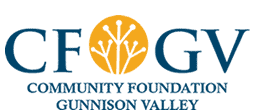Transitions
 If the one constant in life is change, then we are constantly transitioning to accommodate the changes we initiate or that come our way.
If the one constant in life is change, then we are constantly transitioning to accommodate the changes we initiate or that come our way.
Some changes are easy to benchmark – major transitions in private life include being born, becoming a teen, a mature adult, old and the final transition of death. Easy to check off.
Other transitions occur in our spiritual lives and in our relationships and may be more subtle – in our families and with our friends and communities. However, I remember a marriage and family therapist friend say, repeatedly, that even a slight shift in one person causes a change in the entire family. When a child graduates from high school, the whole family dynamic changes. Or, when a grandparent moves in – you know there will be a change in undercurrents.
There are work transitions – from growing into your first job, changing positions, maybe changing careers and retirement. We all know that adding a new staff member and their unique personality changes the whole group. Interesting research shows that people are working longer – mandatory retirement at 65 went away with the Age Discrimination in Employment Act. Thankfully! Why would we send all that wisdom to the golf course or a rocking chair?
Many nonprofits enjoy long, effective relationships with their Executive Directors. However, research shows some staggering statistics. A nationwide Compass Point study reported that 60 – 75% of nonprofit executives plan to leave their jobs within 5 years. The same study showed that 10 – 20% of nonprofits hire a new executive director every year! How does an agency grow that way? What is an even sadder stat is that only 27% of nonprofits have a written succession plan.
We’ve seen many Executive Directors change in the Valley in the last five years. Sometimes those changes are positive and sometimes it takes an organization years to recover. What make the difference?
Planning. Thoughtfulness. Boards that respect the legal “duty of care” responsibility they take on when serving on a nonprofit board. Agencies with a plan and an engaged, educated board will more often experience smoother management transitions.
The Foundation has a morning seminar coming up on Success Planning on February 13th . . . if there’s a nonprofit executive director or board member reading this today who hasn’t signed up . . . I strongly urge you to go to the CFGV website and get yourself to that session! More than just for the “learning” – it’s your responsibility to be educated.
Transitions bring opportunity. A time for boards to assess the direction of an agency. A time to review and modify job descriptions. As Chris Cappy is fond of saying, a time to decide what to keep as it is, what to grow and what to throw away. In other words, a time to review mission alignment.
As a final note, the CFGV succession plan has been implemented. And, the Board has decided to hire from within. Over the next several months, I will shift into a consulting role and Lauren will move into the ED position. We expect a smooth sail. We’re both excited and look forward to the changes that will come. I know you would expect that the Foundation has been thoughtful about the process . . . many months have gone into planning and a transition team is in place to continue to oversee the changes. Expect to hear more!
Donors: The love the Valley’s nonprofits have for you is all encompassing – revel in it! Support them when change comes.
Nonprofits: Take succession planning seriously – for your organization’s health (and sign up for the seminar!)
Community: Change comes with every passing day – it’s inevitable, so embrace it and help guide it by being involved.
